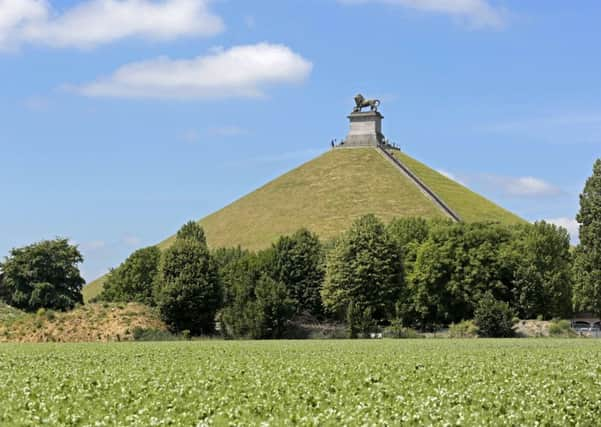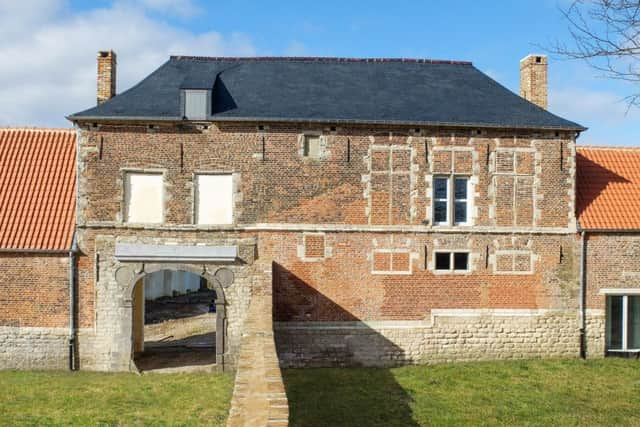Travel: Waterloo, Belgium
This article contains affiliate links. We may earn a small commission on items purchased through this article, but that does not affect our editorial judgement.


The rolling countryside is pretty but unremarkable, yet 200 years ago on 18 June, the most significant European battle of the 19th century took place. We are at Waterloo, around 10 miles south of Brussels, where Napoleon’s forces were defeated by a combination of Wellington’s Anglo Allied army and Gebhard Von Blücher’s Prussian forces.
We awoke to bright sunshine and blue skies. On that day in 1815, there had been heavy rain overnight and the ground was muddy and heavy. Napoleon, with his 72,000 strong army, was ranged opposite Wellington’s 68,000 men. Blücher’s Prussian soldiers were in Wavre, 18 miles away, recovering after defeat only a couple of days before. Napoleon needed to engage and defeat Wellington before Blücher could bring his forces to bear.
Advertisement
Hide AdAdvertisement
Hide AdThe most obvious monument to the battle, the Lion’s Mound, a 141ft man-made hill topped with a huge lion statue, was actually built to mark the location where William II of Netherlands was wounded and knocked from his horse by a musket ball during the battle. His father, William I, ordered its construction in 1820. It serves as the epicentre of Waterloo tourism and is where we gather to buy a e7 ticket, which gains us entry to the Panorama and the hill itself. Construction of the Panorama began in 1912 to mark the centenary of the battle and consists of an enormous circular painting, 110 metres long and 12 metres high, which gives a 360 degree view of the armies engaging.


Painted by Louis Dumoulin, it is augmented with props, figures and a soundtrack of battle noises to further bring the scene to life. A little tired looking perhaps, and by modern standards short of interactive guides and touchscreens, it is nevertheless fascinating, a piece of history in its own right and a useful way to try and grasp something of the geography of the battle, with Wellington’s forces on a ridge, with height advantage, based around three fortified farms and Napoleon determined to overrun them.
The number of troops involved is enormous and the nature of the battle, fought with cannon, cavalry and with swords and muskets at close quarters unimaginable. For the first engagement, Napoleon had waited for the ground to dry before sending 5,000 troops to tackle one of the fortified farms, Hougoumont. After an hour, at 12:30pm, the French broke through the gates. When Wellington’s men managed to re-close the gates, 40 French soldiers were trapped inside. They were all killed, apart from an 11-year-old drummer boy. But this was a diversion, designed by Napoleon to draw troops away from the centre. So 18,000 French troops attacked another farm, Papelotte and the area surrounding La Haye Sainte.
By 2:20pm, ceding ground, Wellington threw two brigades of cavalry to charge the French infantry and hold the lines around La Haye Sainte. The French retreated, then regrouped and attacked with 4,000 strong cavalry. And so it went on. Attack, counter-attack, flanking moves and tactical retreat. Under cannon fire, one British battalion, the 27th Regiment lost nearly 500 of its 747 men.
Blinking in the bright sunlight after the dim lighting of the Panorama, we start the short steep climb up the Lion’s Mound, which has 226 steps. Once at the top, it is set out as a square around the enormous lion. Each side has a simple display showing which troops were where so, with spectacular views across the countryside, you can imagine how the formations and battle might have looked. But it is virtually impossible, because all is peaceful and bucolic, apart from the slight drone from traffic drifting over from the RO road which circles Brussels.
The weekend after next, it will be a different picture. Each year, on the anniversary of the battle, re-enactment enthusiasts, dressed in uniforms from all the various armies and regiments gather in their thousands, including a Wellington and Napoleon. They pitch camp in the way they would have done in 1815, staying for the weekend and going through manoeuvres echoing parts of the battle. Organisers promise the biggest turn out yet for the 200th anniversary celebrations, with 5,000 re-enactors, 300 horses and 100 cannon.
For those who wish to stay close to the site, Hougoumont farm is now owned by the Landmark Trust (www.landmarktrust.org). It has been subject to a £3.5 million restoration project which has involved the walls of the courtyard being limewashed, though the brickwork of the external elevations has been left exposed, as it was during the battle. The great barn, now the new visitors’ centre, has been made weathertight and the timbers cleaned and repaired. It is also home to a smart apartment for holiday lets. Situated in a former gardener’s cottage, it sleeps four and is furnished to evoke the Napoleonic era. You couldn’t be closer to a key moment in history. Of the previously unheralded farm, Wellington later said: “the outcome of the Battle of Waterloo depended upon the closing of the gates at Hougoumont.”
Close by a large dig has begun to excavate a mass grave from the battle. The international team, led by archaeologists from the University of Glasgow, includes members of the armed forces and veterans who have experienced trauma during service.
Advertisement
Hide AdAdvertisement
Hide AdOur own troops were wilting in the heat, so we retreat from the Lion’s Mound to the Wellington Café, where, with the Tour de France playing on the TV screens, we have a better than expected simple lunch of filled baguettes and cold drinks.
We make a tactical retreat and return to Brussels. If you are in Belgium, there are numerous places to visit. In the capital, we tick off the Mannekin Pis, the spectacular-looking Atomiom, built for the 1958 World’s Fair and renovated since a visit years before but still better from the outside, Tintin’s statue in Ukkel and the Grand Place, a Unesco World Heritage site.
Slightly further out from Brussels, we visit Kessel-Lo a huge free park with adventure playgrounds, a lake with boats for hire and mini go-karts for younger children. Great for everyone to let off steam.
It is close to Leuven, a lovely university town with a spectacular Town Hall, a Gothic triumph complete with 236 statues of the great and the good of Leuven’s yesteryear.
It sits on Grote Markt square and guided tours take place at 3pm daily for e4.
Leuven’s most famous export is Stella Artois, also makers of Leffe and Hoegaarden beers, which has a huge brewery here. As with many breweries, tours are available, though here only at weekends (www.breweryvisits.com).
Signs of warfare are not limited to Waterloo, for Belgium has been a battlefield in Europe long before 1815 and twice since. In the First World War, Leuven’s treasured university library was burned and 248 civilians killed by German forces, while bombardment caused more damage in the Second World War, including to St Peter’s Church, thankfully restored, complete with a gleaming gold jacquemart or automaton, only added in 1998, which rings a bell by the clock on the gable.
P&O Ferries (08716 646464, www.poferries.com) sails overnight between Hull and Zeebrugge with the cruise ferries Pride of York and Pride of Bruges. The crossing takes 12 hours. Standard return fares are from £258 return for a car and two people (includes cabin).